A small bell starts moving from A over a fixed track as shown in the figure . Surface AB is friction from A to B the bell roll ralis without sipping BC is friction , KAKB andKC are kinetic energy of the bell at A,B and C respacecvely.Then
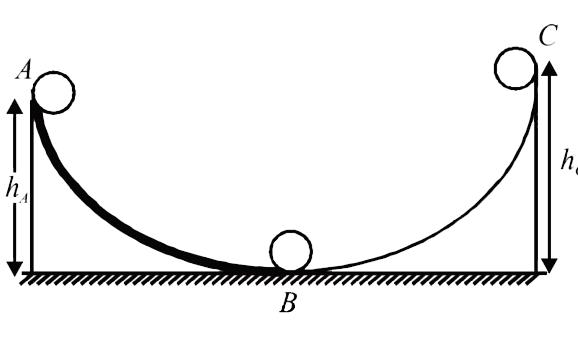
hA>hC,KB>kc
hA>hC,Kc>kA
hA=hC,KB>kc
hA<hC,KB>kc
The correct Answer is:A, B
At point A , potential energy of the ball =mghA
At point C , potential energy of the ball =mghC
Total energy at point A,EA=KA+mghA
Total energy at point B,EA=KA+mghA
Total energy at point C,EC=KC+mghC
According to the law of conserveation of energy
EA=EB=EC ....(i)
E_(A) = E_(B) rArr E_(C)gt k_(C)....(ii)<br>EA=EC
K_(A) + mgh_(A) = K_(B) + mgh_(C) ...(iii)<br>rArr b_(A) gt b_(C) , K_(C) gt K_(A) ...(iv)<br>Option(b)iscorrect<br>force(i)(ii)and(iv),we≥thA,KB>KC Option (a) is correct .
Topper's Solved these Questions
Similar Questions
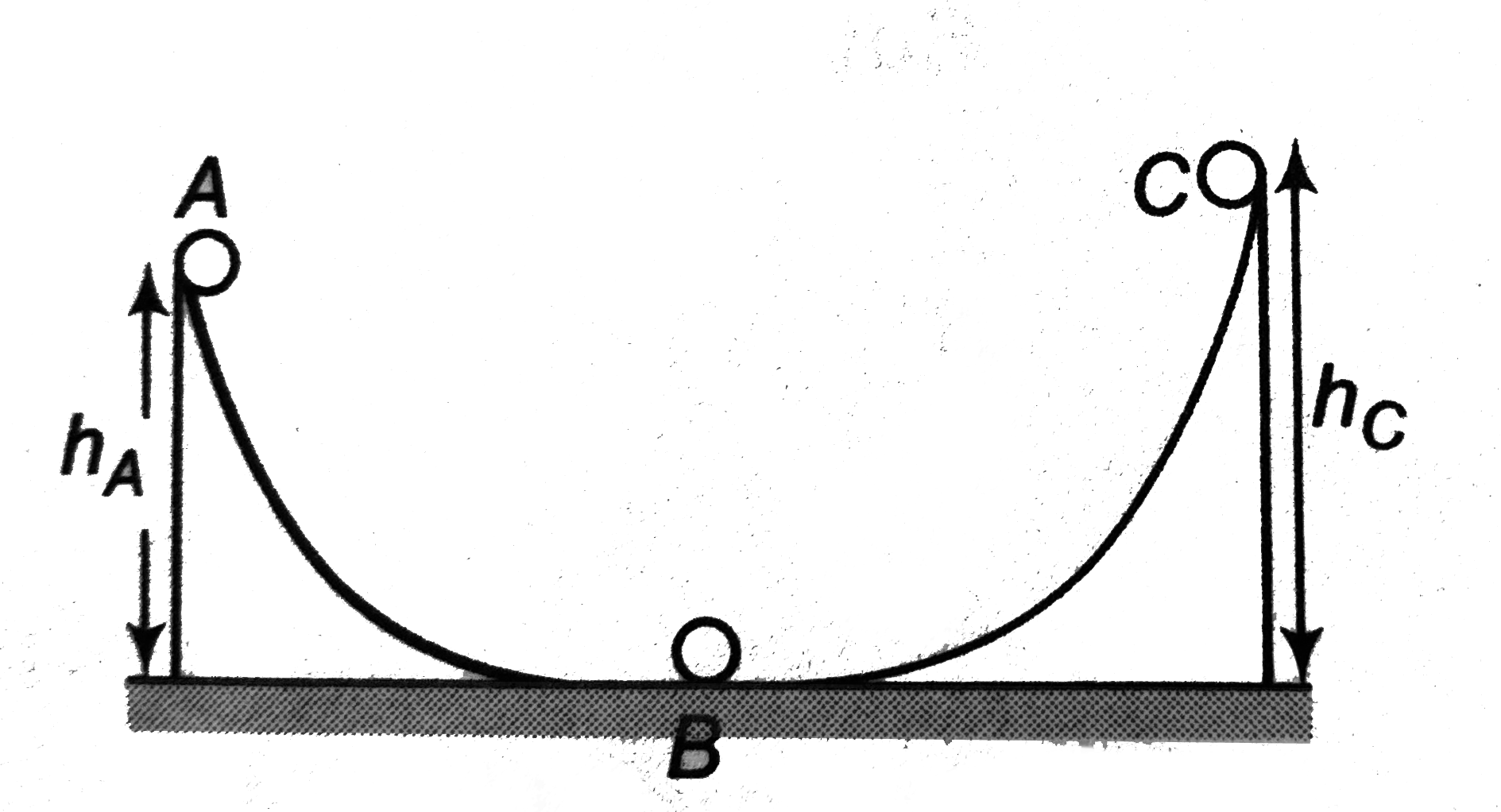
A ball moves over a fixed track as shown in thre figure. From A to B the ball rolls without slipping. If surface BC is frictionless and KA,KB and KC are kinetic energies of the ball at A, B and C respectively then
(a). hA>hC,KB>KC
(b). hA>hC,KC>KA
(c). hA=hC,KB=KC
(d). hA<hC,KB>KCView SolutionA small block of mass m slides along a smooth frictional track as shown in the figure. If it starts from rest at P, what is the resultant force acting on it at Q?
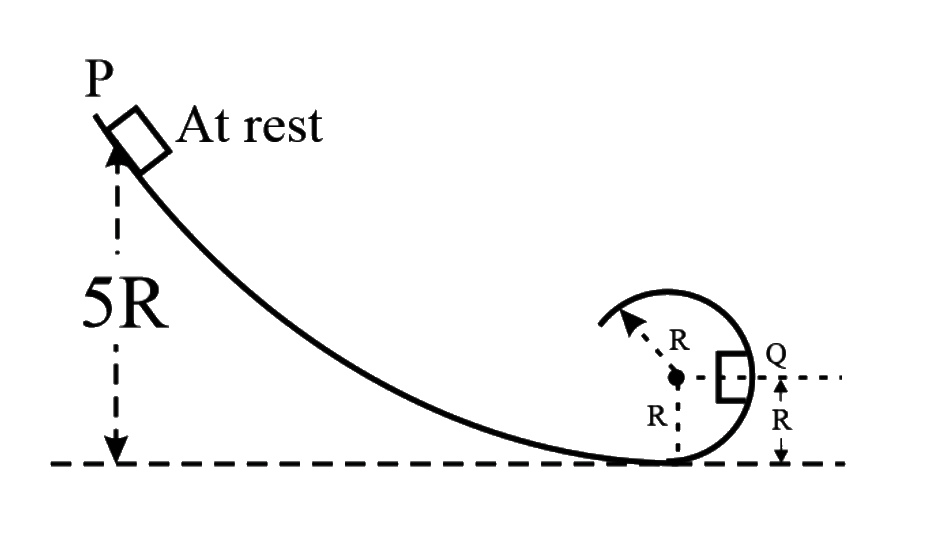 View Solution
View Solution
Knowledge Check
- Question 1 - Select One or More
A ball moves over a fixed track as shown in the figure. From A and B the ball rolls without slipping. If surface B is frictionless and KA,KB and KC are kinetic energies of the ball at A,B and C respectively then:
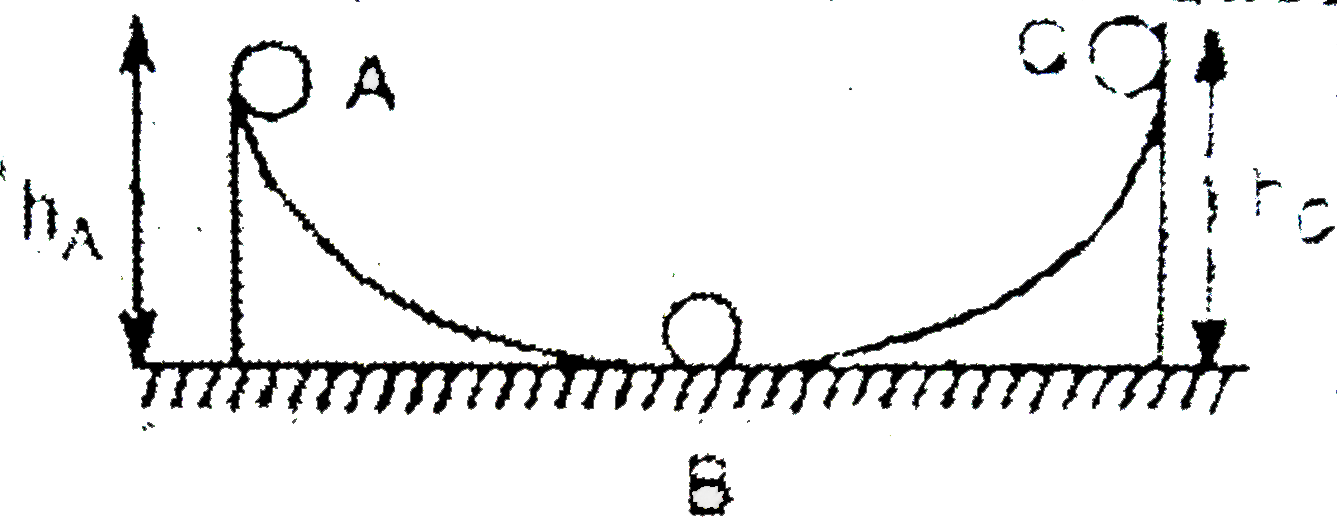 AhA>hC,KB>KCBhA>hC,KC>KAChA=hC,KB=KCDhA<hC,KB>KC
AhA>hC,KB>KCBhA>hC,KC>KAChA=hC,KB=KCDhA<hC,KB>KC - Question 2 - Select One or More
A ball moves over a fixed track as shown in the figure. From A to B ball rolls without slipping. Surface BC is frictionless. KA,KB and KC are kinetix energies of the ball at A,B and C, respectively. Then
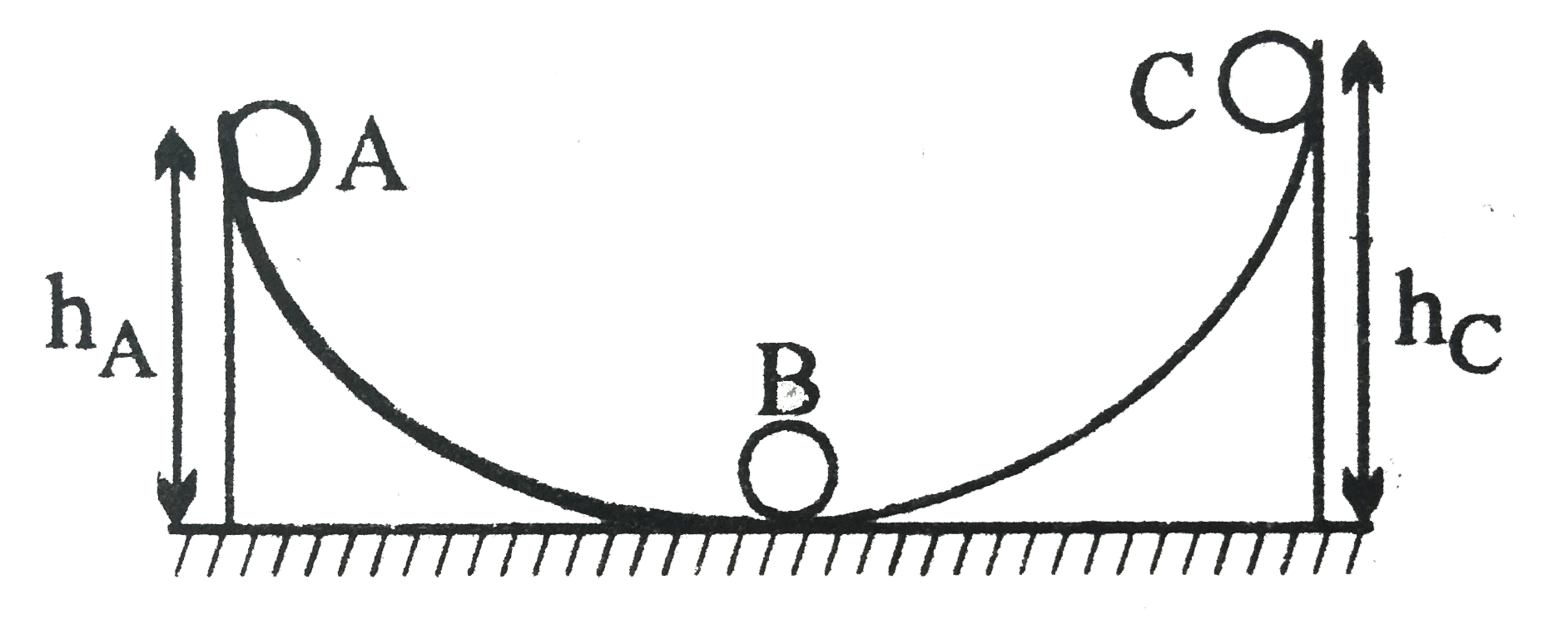 .AhA>hC,KB>KCBhA>hC,KC>KAChA=hC,KB=KCDhA<hC,KB>KC
.AhA>hC,KB>KCBhA>hC,KC>KAChA=hC,KB=KCDhA<hC,KB>KC - Question 3 - Select One
Portion AB of the wedge shown in figure is rough and BC is smooth. A solid cylinder rolld without slipping from A to B. Find the ratio of translational kinetic energy to rotationa linetic energy, when the cylinder reaches point C.
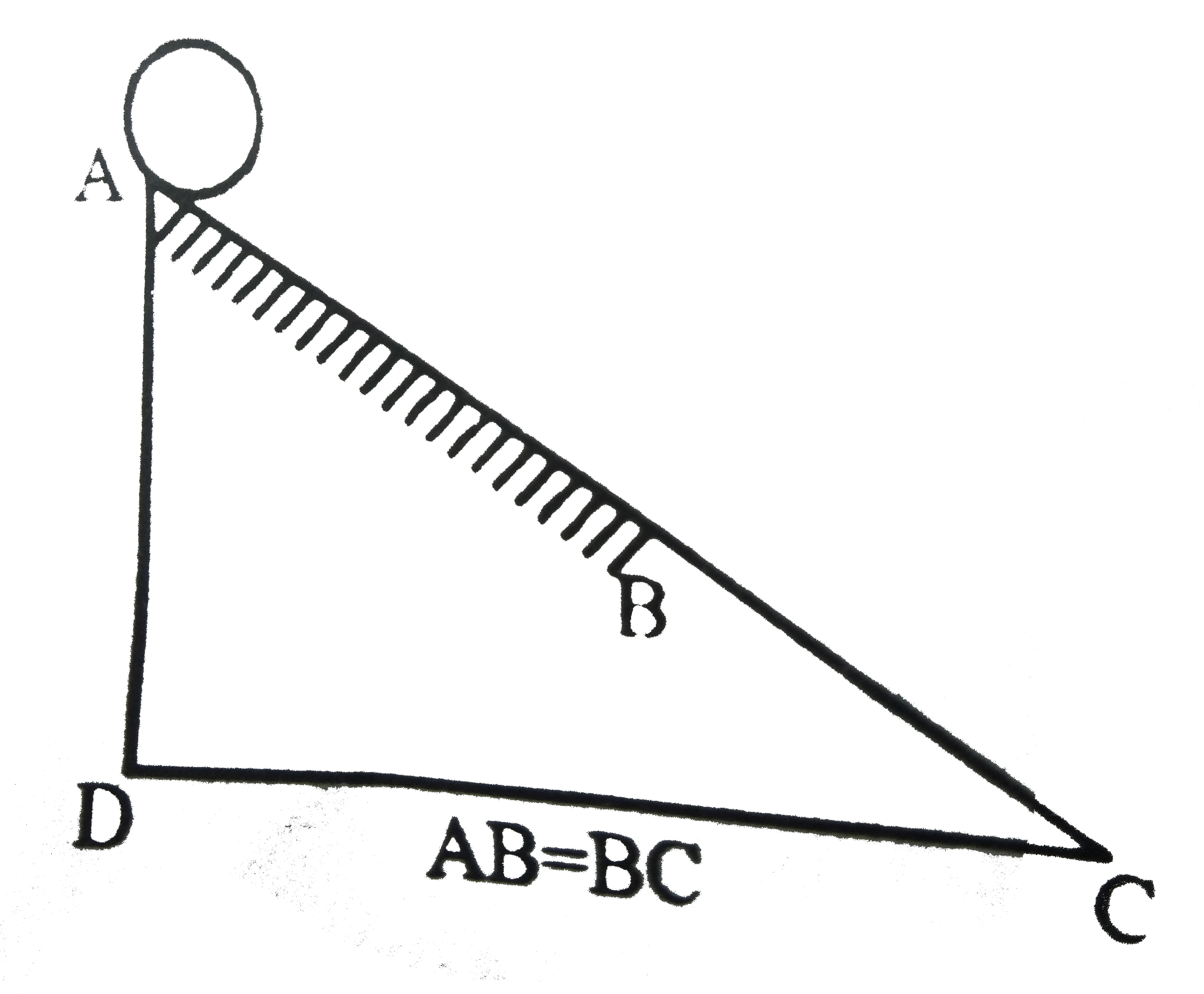 .A3/5B5C7/5D8/3
.A3/5B5C7/5D8/3
Portion AB of the wedge shown in figure is rough and BC is smooth. A solid cylinder rolld without slipping from A to B. Find the ratio of translational kinetic energy to rotationa linetic energy, when the cylinder reaches point C.
 .View Solution
.View SolutionIf a car is moving rightward with acceleration a=g√km/s rightward as shown in the figure. Find the value of k so that, rod maintains its orientation as shown in the figure. Neglect the friction and mass of the small roller at A and B.
 View Solution
View SolutionA 1000 kg car starts from rest at point 1 and moves without friction down the track as shown in the figure. At point 2, the radius od curvature of the track is 6m.
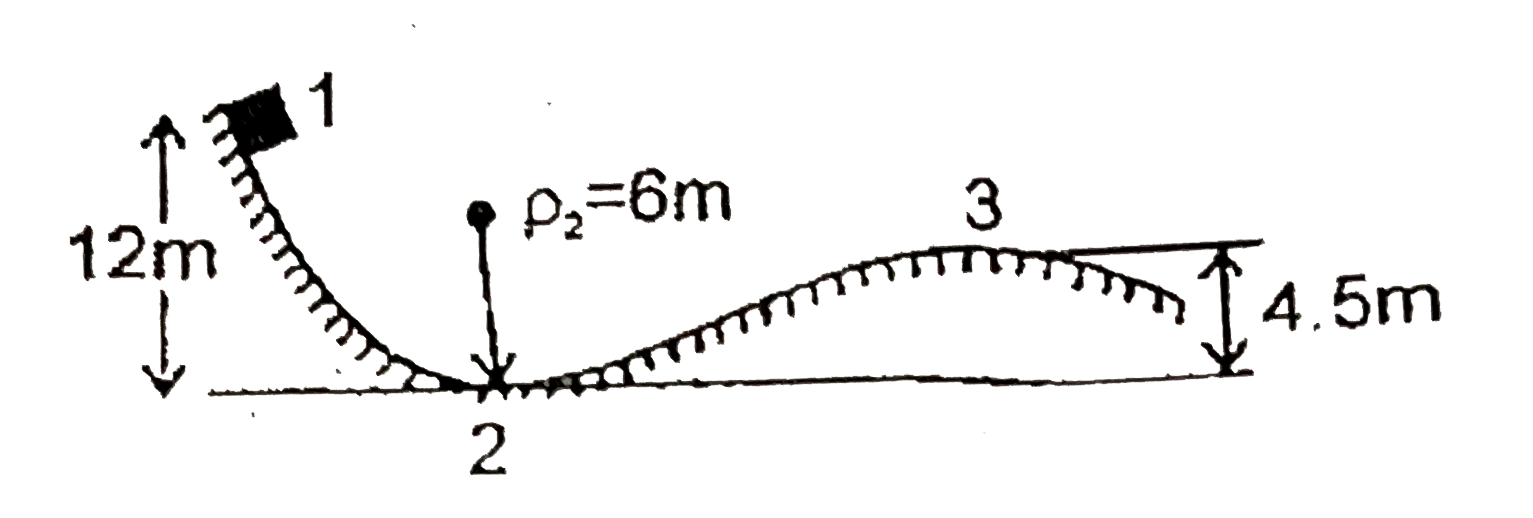 View Solution
View SolutionPortion AB of the wedge shown in figure is rough and Bc is smooth. A solid cylinder rolls without spinning from A to B. If AB=BC, then ratio of transitional kinetic energy to rotational kinetic energy, when the cylinder reaches point C is
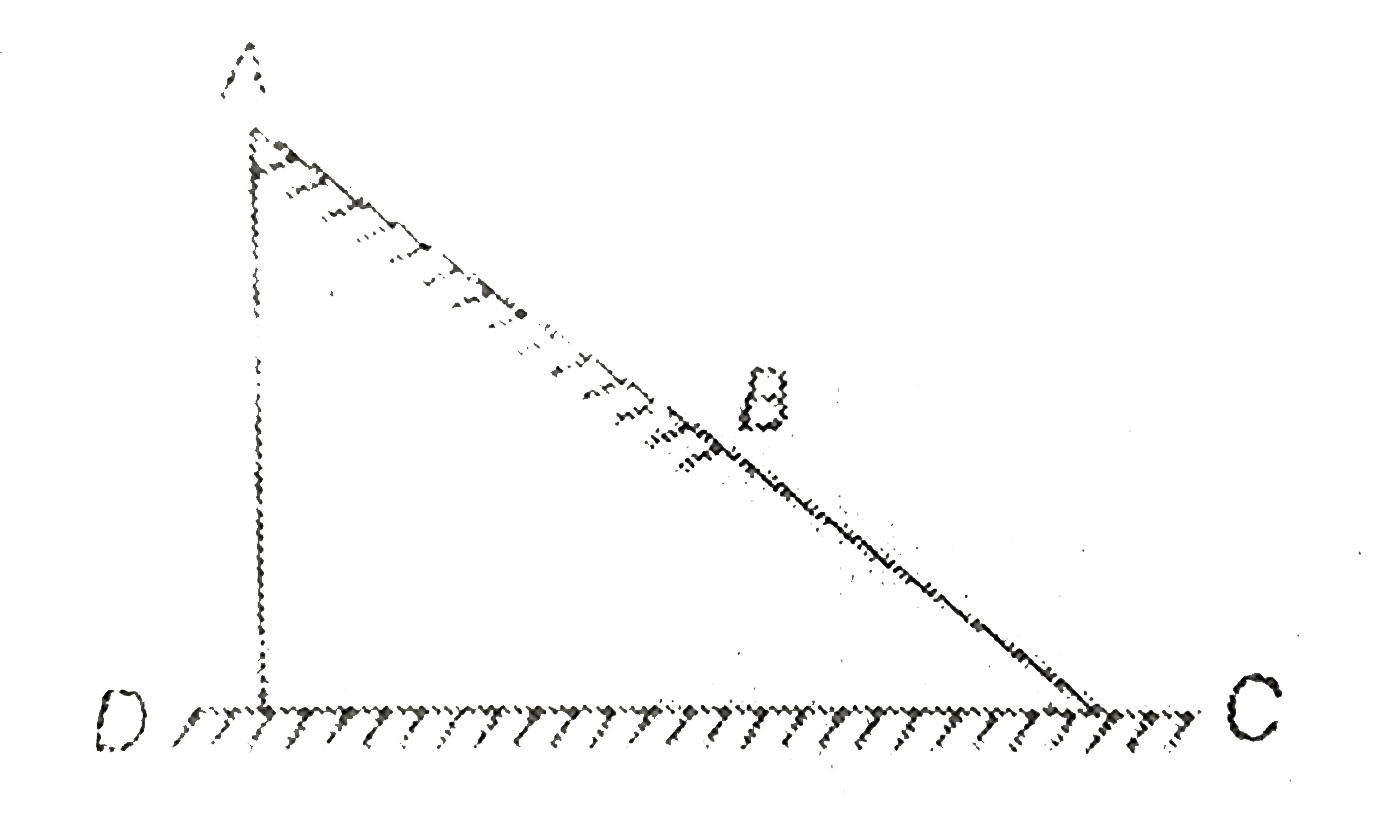 View Solution
View SolutionA wire, which passes through the hole in a small bead, is bent in the form of quarter of a circle. The wire is fixed vertically on ground as shown in the figure. The bead is released from near the top of the wire and it slides along the wire without friction. As the bead moves from A to B, the force it applies on the wire is
 View Solution
View Solution

